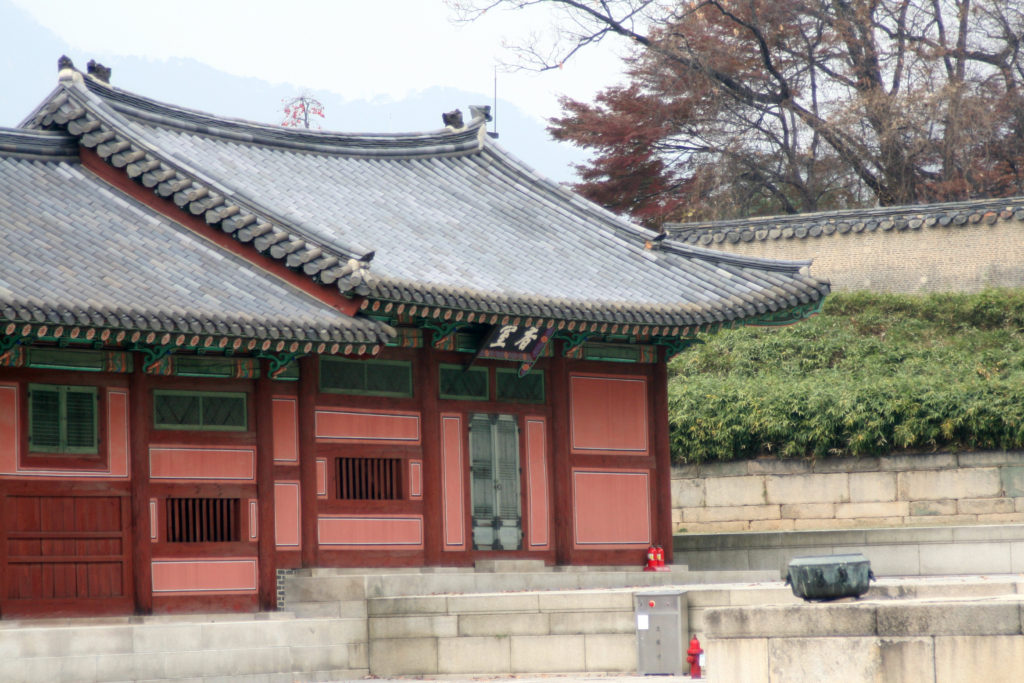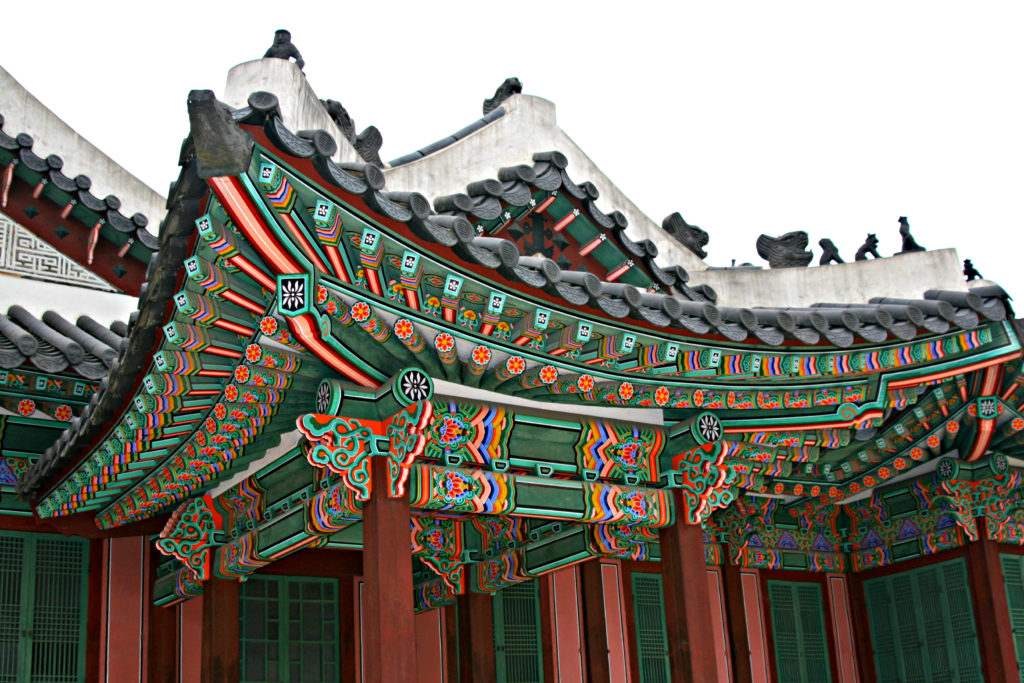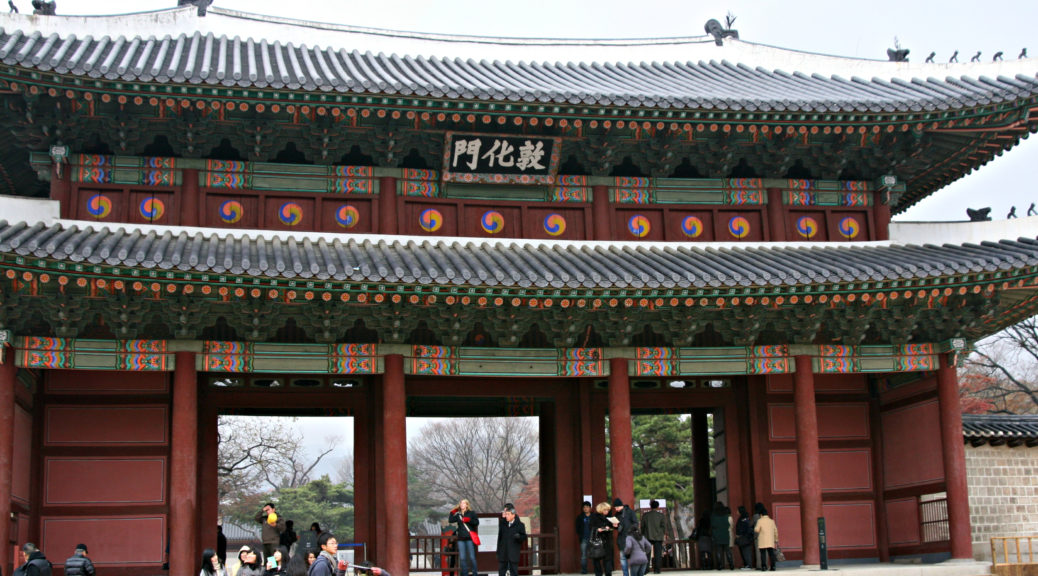
Changdeokgung Palace
On a day when our son and daughter-in-law were more heavily involved in wedding preparations, we toured the Changdeokgung Palace. When visiting Korea, we found that there were far fewer people who spoke English when compared to other countries we have visited. The hotel concierge wrote down where we were going and gave us a card with the name of our hotel which we could give to our taxi driver, ensuring that we got to where we were going and back again.
The Changdeokgung Palace is a UNESCO World Heritage Site. It was selected as “an outstanding example of Far Eastern palace architecture and garden design, exceptional for the way in which the buildings are integrated into and harmonized with the landscape.” It was originally built in 1405, and despite damage during the Japanese occupation of Korea, it is considered well-preserved. It has undergone restoration and rebuilding since 1592. The picture above the blog title is of the main entrance to the palace complex, the Donhwamun Gate. Originally built in 1412, it was destroyed during the Japanese occupation and rebuilt in 1607-09.
After entering the complex, we crossed the Geumcheongyo Bridge. Built in 1411, it is the oldest stone bridge in Korea. The creek underneath the bridge winds around the outer buildings of the palace complex. Crossing over flowing water was thought to be protection from harm.
The next picture is of the Injeongmun Gate which brought us to the Injeongjeon Hall (fourth picture). It was rebuilt in 1614 and is the oldest building in the palace complex. Injeongjeon Hall is considered the main building of the Changdeokgung Palace Complex and is where the king would meet special guests. There is a courtyard in front of the Hall with stone markers on either side. The rank of court officials were carved into these stones. When meeting with the king, the official would stand by the marker with his rank. The higher the rank, the closer the official would stand to the king. Inside, there is an impressive throne.



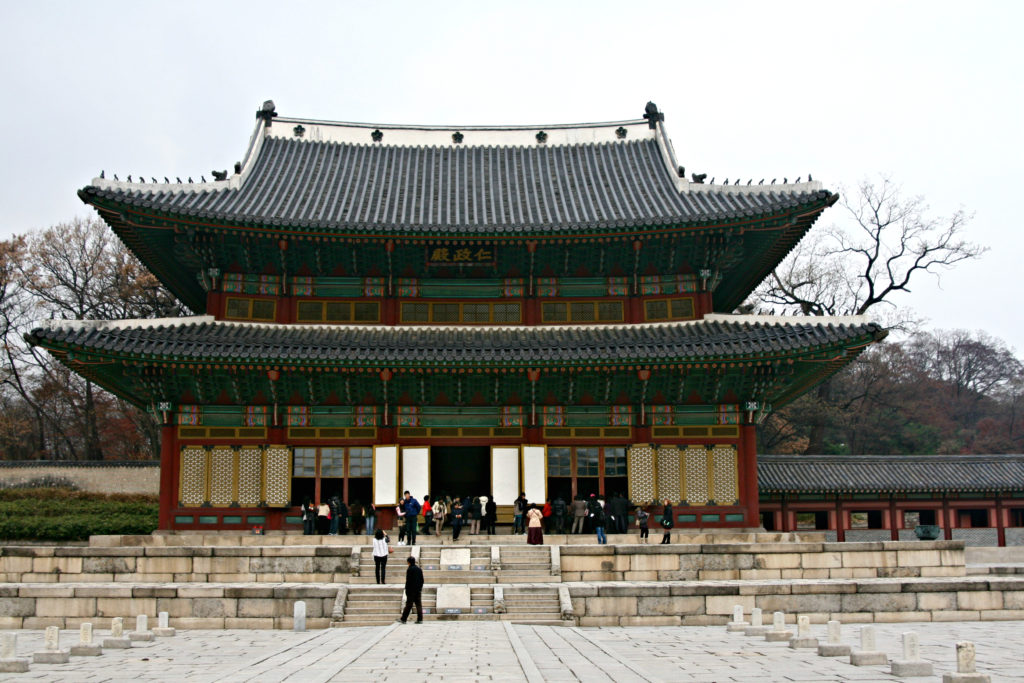
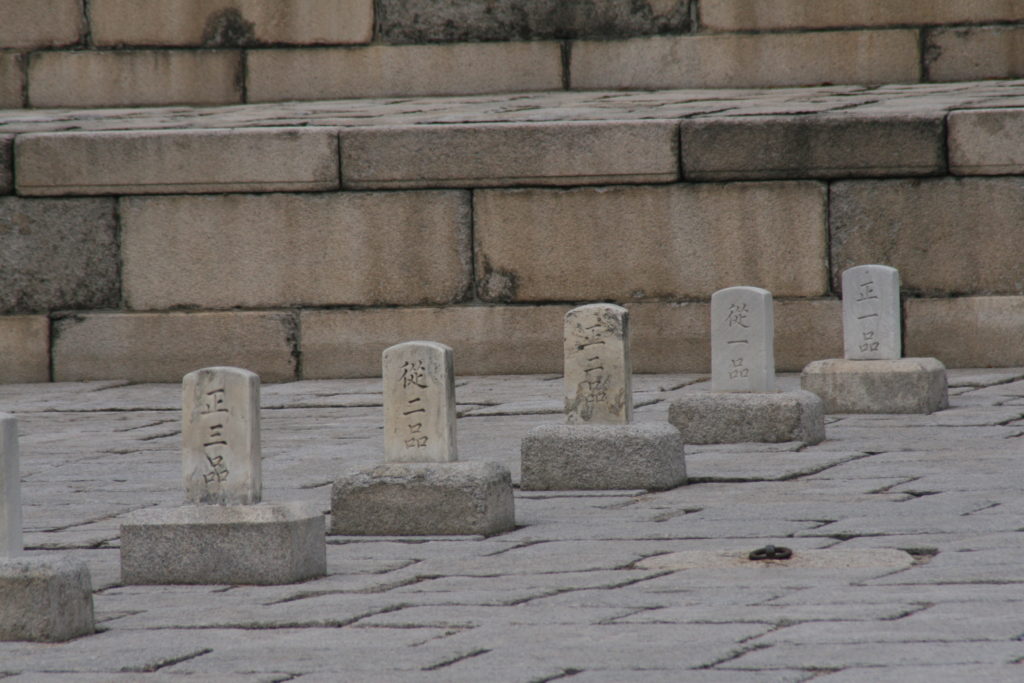
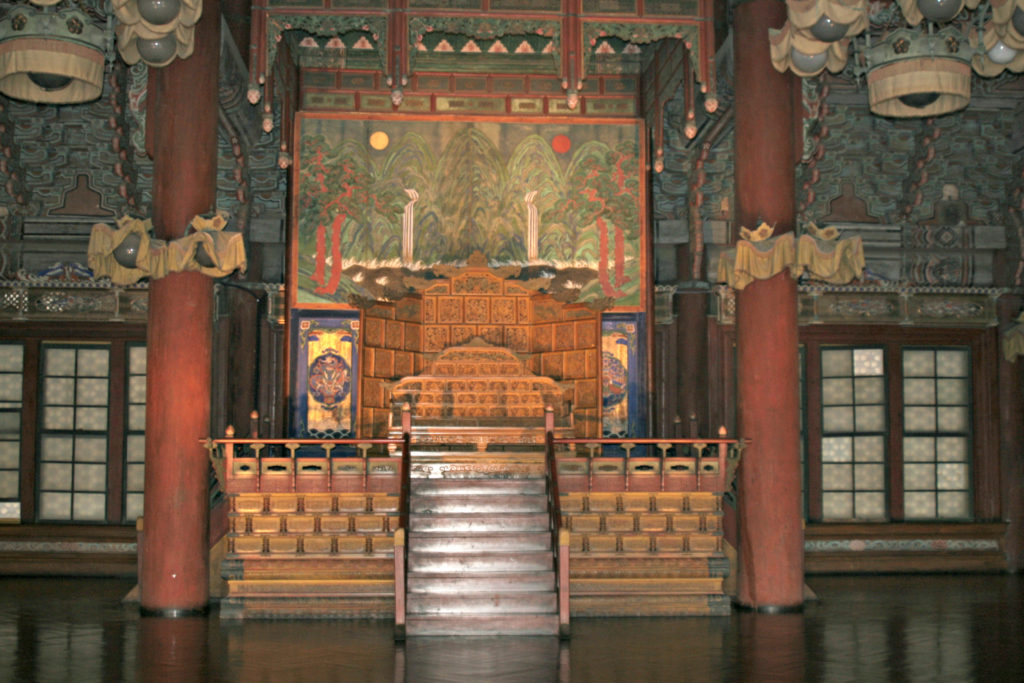
The first picture below is of the interior of Huijeongdang, which means Pavilion of Joyous Governance. It once served as the king’s bed chamber, but later became a place for conferences, where matters of state were discussed. The exterior was built in the traditional Korean style, but the interior has a western style. The next picture in this section is of Seonjeongjeon Hall. This is where everyday business would be conducted. The roof is blue to symbolize the king’s administrative offices. Today, the executive offices and residence of South Korea’s president are in the “Blue House” so named because of its blue roof tiles.

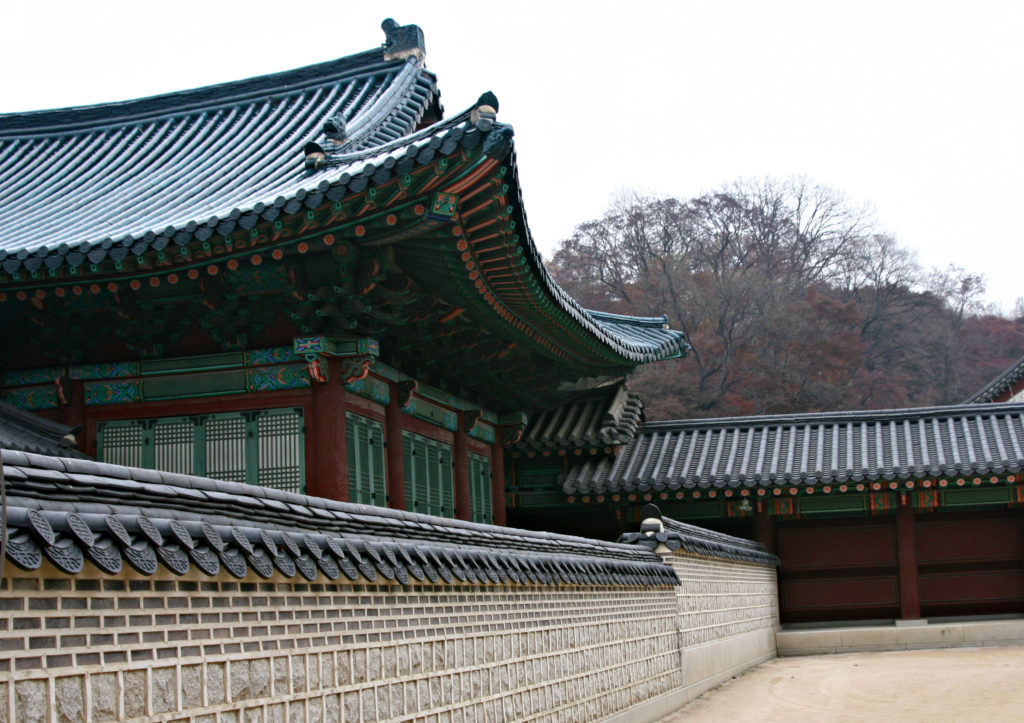
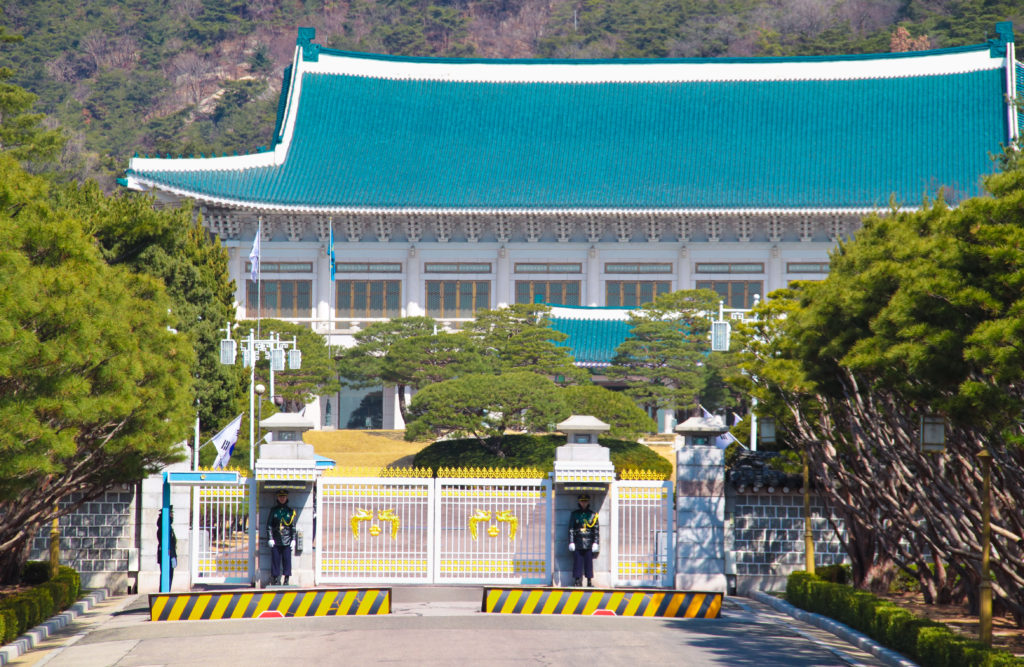
The next picture shows part of the building serving as the living quarters for the royal family. There was a “living room” in the center, with a bedroom for the queen and another for the king on either side of the living room. There were also quarters for the king’s concubines. The palace complex used an underground heating system that heated the floors of the different buildings. The last pictures are of the chimney that supports the heating system, including a close-up picture of one of the chimney’s panels.


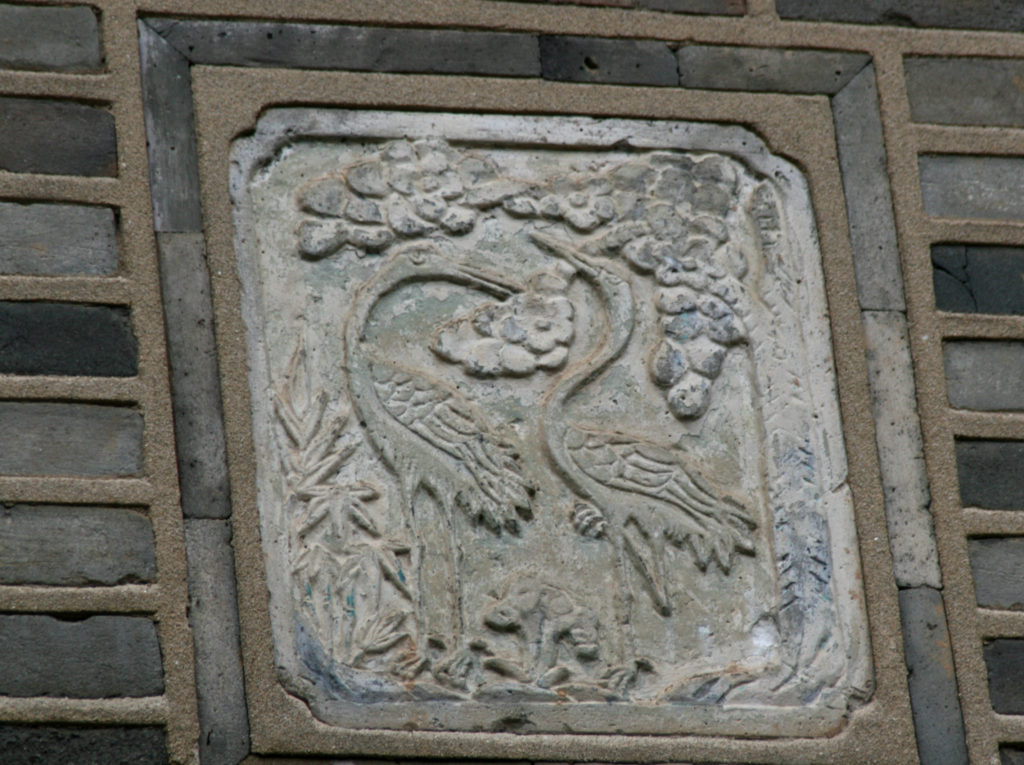
We then walked up the steps and through the archway which led to the Huwon Secret Garden. Located at the back of the Changdeokgung Palace complex, the gardens were for use by the royal family. At one time it was called the Forbidden Garden, because one could only enter by invitation of the royal family. The garden area actually encompasses 60% of the palace grounds. As we walked through the archway, we first saw several beautiful trees.
Moving farther into the garden, we came to a rectangular pond named Buyongji. The Eosumun Gate is a small gate and is on the right side of the third picture. The next picture shows a close-up of the gate. The gate leads to the Juhamnu Pavilion, a two-story structure. The royal library, named Gyujanggak, was on the first floor. The second floor was used as a reading room. The last picture is of the Buyongjeong Pavilion and was used for private retreats.
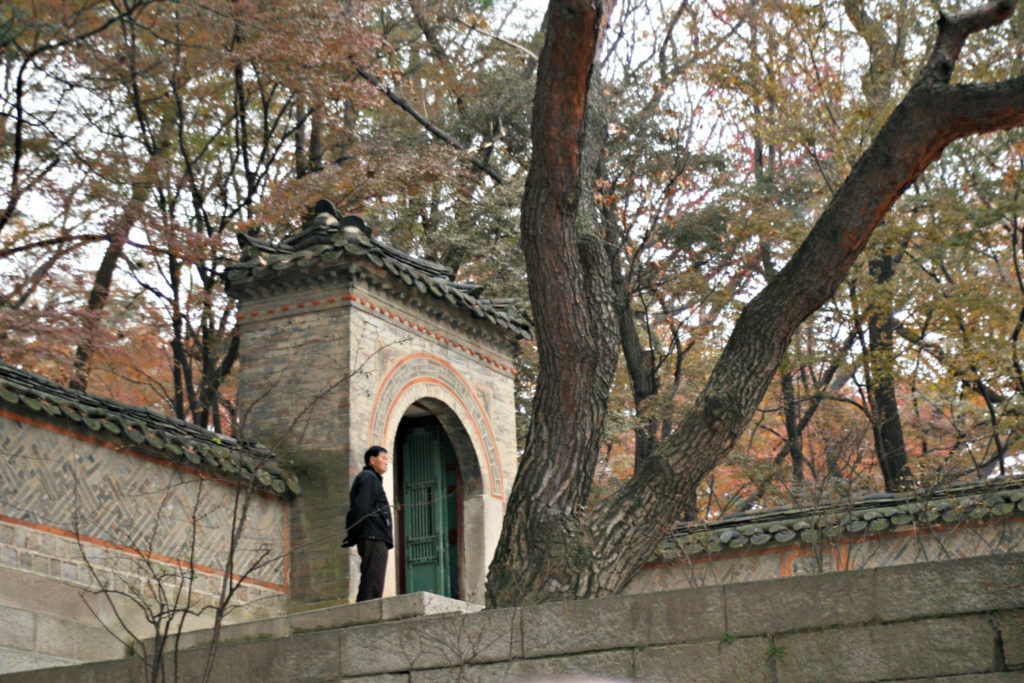

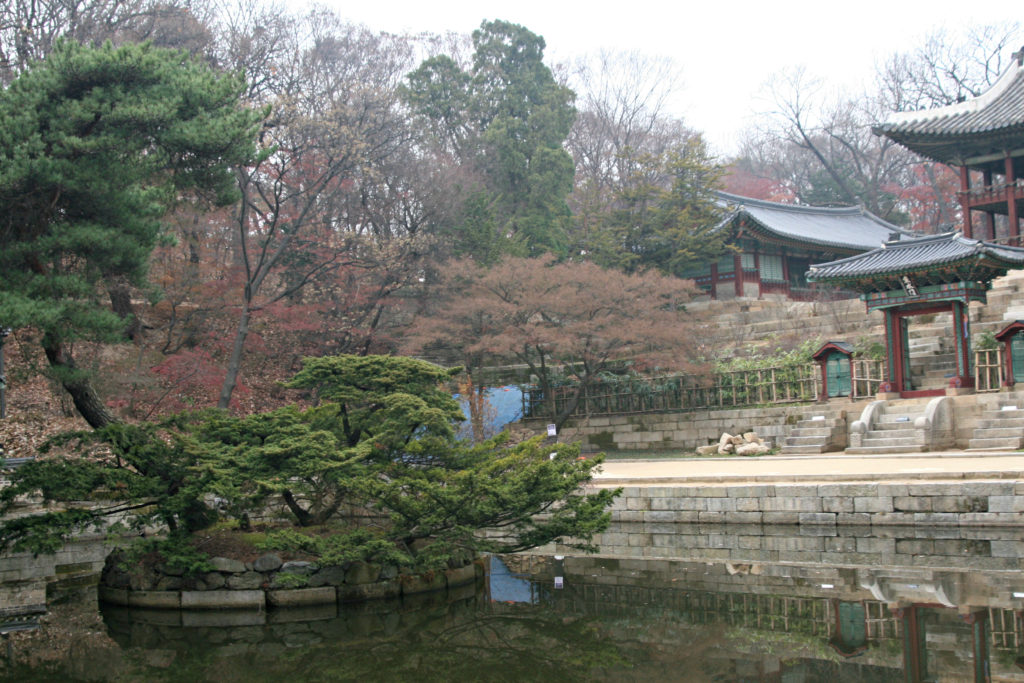



These last pictures are others from the palace complex that I liked. If you decide to visit Changdeokgung Palace, I would suggest you allow two to three hours. Tours are available – we took advantage of this and found it very helpful.
